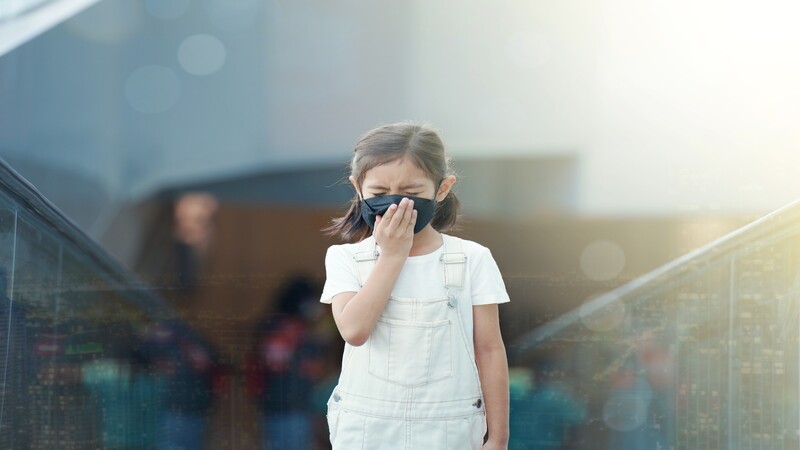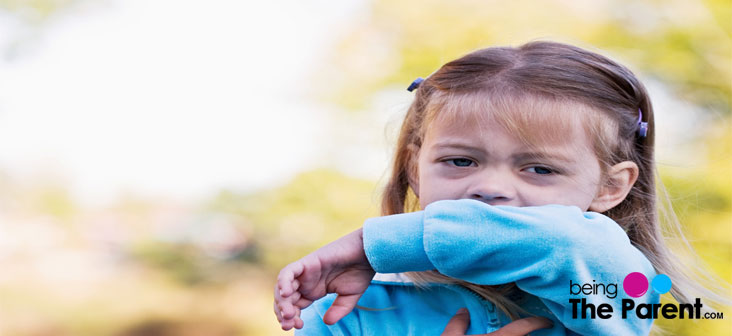With Delhi’s smog levels rising to an all-time high this winter, all of us have become more aware of air pollution and the danger it poses to our health, especially our children’s health. Here is everything you need to know about pollution, its impact and how to reduce its effect.

Why Are Children At A Greater Risk Than Adults From Air Pollution?
Children are more susceptible to pollution than adults. This is because of three reasons:
- Children breathe in more air per kilogram of their body weight than adults. This means that they are more exposed to air pollutants than us adults
- Children still have lungs that are under-developed. Their lungs will become fully developed only when they are well into their teens. Till then, since the lungs are still a work in progress, their respiratory system will take in more toxins and pollutants and retain them for a longer time in their body. This means the pollutants affect their internal organs more
- Children’s breathing rate is faster than adults. This means that they take in more environmental toxins and at a faster rate
Which Air Pollutants Have The Greatest Impact On The Health Of Children?
While we all know that air pollution has many harmful impacts, do we know the different kinds of air pollutants that are problematic? There are essentially seven air pollutants that have maximum impact on your child’s health. They are:
- Ozone: Short-term exposure to Ozone can result in problems relating to respiratory tract and eyes. It can also aggravate the impact of other air pollutants. Long-term exposure to Ozone can permanently reduce the lung function
- Carbon Monoxide: Carbon monoxide, when inhaled, enters the bloodstream quickly and combines with hemoglobin to form carboxyhemoglobin. This is very dangerous as this prevents hemoglobin to carry oxygen through the body. Even 10%-30% of carboxyhemoglobin in the body can result in death
- Airborne Particles: These include nitrates, carbon, aerosols and sulfates. These can cause acute respiratory problems, reduced lung air flow rates and aggravated chronic problems such as asthma
- Nitrogen Oxide: Nitrogen Oxide can suppress the immune system and cause lung irritation and inflammation. The suppressed immunity also results in increased risks of other lung infections
- Lead: Exposure to heavy metals in the air can result in nervous system impairments in children. It lowers cognitive development, cause kidney damage, changes IQ levels and result in motor problems
- Sulfur Oxide: Sulfur Oxide can really impact children who already have asthma as it results in airway constriction
- Diesel Emission: Diesel is full of carbon and carbon-containing chemicals. They are microscopic and hence enters the deepest parts of lungs very easily. They are also known to be retained in the body for a very long time. The problems associated with diesel inhalation are plenty – it can cause headaches, eye irritation, throat problems, nausea, dizziness, and breathing problems

What Are The Effects Of Air Pollution On Children’s Health And Development?
As expected, air pollutants have many impacts to children’s health and development. Here are some of the most important effects of air pollution:
- We saw earlier how children are more exposed to toxins in the air. And due to this, there is a high chance their lungs can get injured. This, in turn, reduces the children’s lung capacity, not only during childhood, but also well into adulthood. There is also higher chances of lung infection
- Chronic conditions like asthma and cystic fibrosis worsen when affected children are exposed to air pollutants
- Exposure to air pollution can also result in lowered lung function, slower growth and development of lungs and reversible lung function deficits
- Air pollution not just impacts the respiratory system, it can also impact the nervous system. Exposure to heavy metals in the air, such as lead, can impact the cognitive development of children
- In general, air pollution affects the overall health of children because many problem-causing factors, such as air pollutants, food, and viruses, are all interlinked and interact with each other, worsening the negative impacts they bring to the body
What Can We Do To Reduce The Effect Of Air Pollution On Children’s Health?
It is very clear that children are more impacted by air pollution than the adults. How do we help reduce the effect of air pollution on children’s health? Here are few tips to be done at home and outdoors:
At Home:
-
-
- Ensure your child gets enough exercise. Usually, the combination of air pollution and physical inactivity can be very dangerous. If your child exercises regularly, his lungs capacity will increase and he will generally have a stronger cardiovascular system
- Ensure proper nutrition. Research has seen that changes in daily diet have a lot of impact on the risk of disease development
- Ensure your child takes proper medication when he is down with any form of lung infection. Lung problems can aggravate quickly, so never keep your child away from the hospital for a long time if affected
- Use air conditioning when you feel that air quality is low outside
- Use Air Purifier. An air purifier with dehumidifier helps to get rid of the allergens, dust, and toxins to a considerable extent from the indoor. It also helps to maintain the best possible humidity, thereby, steer clear bacterial & fungal pollutants from indoor.
-
At Outdoors:
-
- Pollution levels vary with time. Understand this variation to plan your outdoor activities. For instance, mornings and evenings in winter are worse because of the deadly combination of smoke and fog. Traffic-related pollution is high during peak hours
- Walk the talk. Try to carpool or use public transport so that you do not contribute to the pollution

